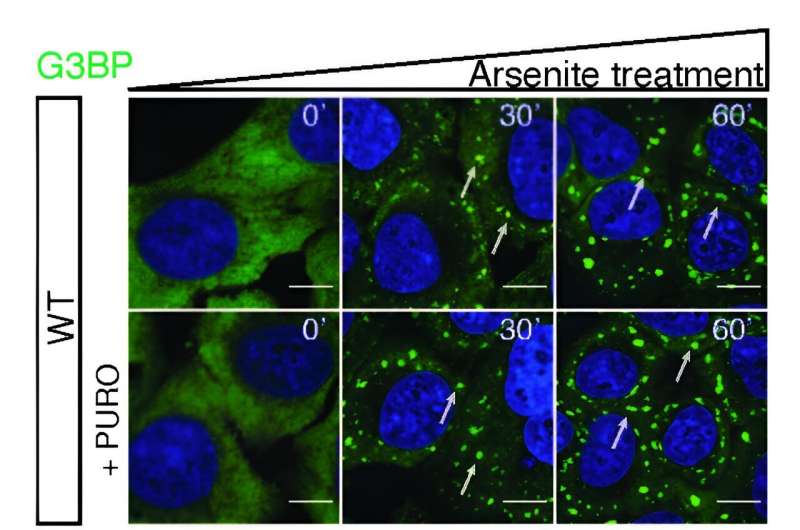Discovery shows how cells defend themselves during stressful situations
Originally published by Lisbeth Heilesen, Aarhus University, on February 27, 2024
Figure shows stress granule formation after oxidative stress in wild-type cells and cells depleted for the ac4C acetyltransferase enzyme NAT10. Credit: Pavel Kudrin
A recent study by an international research team has unveiled an exciting discovery about how our cells defend themselves during stressful situations. The research, published in EMBO Reports, shows that a tiny modification in the genetic material, called ac4C, acts as a crucial defender, helping cells create protective storage units known as stress granules. These stress granules safeguard important genetic instructions when the cell is facing challenges. The new findings could help shed light on relevant molecular pathways that could be targeted in disease.
Stress granules are an integral part of the stress response that is formed from non-translating mRNAs aggregated with proteins. While much is known about stress granules, the factors that drive their mRNA localization are incompletely described. Modification of mRNA can alter the properties of the nucleobases and affect processes such as translation, splicing, and localization of individual transcripts.

Comments
Post a Comment